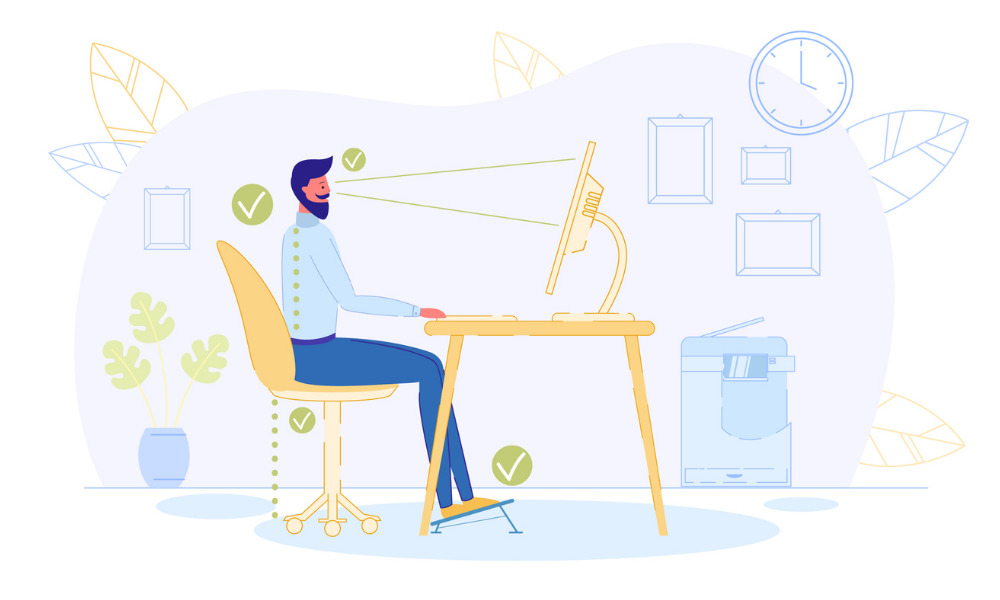‘Give them guidelines on the furniture and equipment that they will be buying so that they don’t go out and waste money’

As the fourth wave of the COVID-19 pandemic rolls along, many employers might be thinking twice about a full return to the office as the infection numbers rise.
But what happens if governments mandate a return to home and employers are faced with yet another lockdown?
“The good thing is that last time, we didn’t have a lot of time to prepare. This time, we’ve got some experience, we’ve got some time to prepare so, ideally, companies should have some type of plan or policy in place for their employees as they go back to working from home,” says Julia Abate, executive director at the Ergonomics Center at North Carolina State University in Raleigh, N.C.
How are workers sitting?
From a comfort and ergonomics point of view, the best place to begin, according to Abate, is ensuring workers have a proper place to sit.
“One of the key things is a good supportive chair and making sure it’s adjustable. A lot of times people will buy the cheapest thing they can — if the company is not providing something or they might find something that looks really nice but isn’t necessarily a supportive chair, not for eight hours or more of work.”
Employers should next look at the type of computer setup, as many workers use a laptop for their primary PC but “our bodies were not designed to work with the keyboards and the monitors connected,” says Abate. “Being able to separate those can be real quick and easy fixes: a separate keyboard and mouse and something to elevate the laptop so that you’re not looking down at the screen when you’re working.”
Maintaining blood flow to the body is also key to preventing certain injuries, she says.
“We still recommend that [employees] get up and move every hour: change positions, at least every hour, just to get the blood flow going. It might be to go drink some water or go check your laundry: do something but try to get some movement in your day and get up out of that chair. The key thing is just getting up and moving.”
To alleviate being in a potentially harmful position, there is a simple axiom to keep in mind, says Abate.
“Always do the opposite of what you’re doing: if your hand is squeezing the mouse all day, open up that hand; if you’re hunched over your keyboard, stretch your shoulders to get those muscles in the opposite position for a little bit.”

Julia Abate
Employee resource centre
To help remote workers survive and thrive from home, employers should have a central, web-based place to let employees know where they can turn to for help, according to Abate.
“They might have a website that says, ‘If you need furniture, equipment, this is where you go [and] this is what stipends are allowed. If you need help with childcare or eldercare, here’s some resources, if you want some stretches, here’s some resources.’”
But if an employee begins suffering from workplace-related strain or even injuries, other resources should be offered, says Abate.
“Some places have a self-assessment online or they have a company or an expert that can come in and do an ergonomics assessment of their workplace to see what some of those pain points might be and how they can be addressed.”
For those employees lucky enough to have financial support, this should all be made clear to them, she says.
“Do they give a stipend to employees? And if they do then they should be giving guidelines to the employees on what type of equipment to buy. If you buy a chair, make sure it includes adjustable height, lumbar support. Give them guidelines on the furniture and equipment that they will be buying so that they don’t go out and waste that money on something that two months down the road, they call back and say, ‘This chair I bought with my stipend doesn’t work and my back is still hurting me.’”
But in her experience, many companies have stepped up to help workers, according to Abate.
“Whether it’s allowing them equipment to take home, giving them some type of equipment stipend, even if it’s just $100. Some have even given either $500 to $1,000 stipends or sent furniture to employees. It really depends on the culture and on the budget they’ve got,” she says.
A recent U.S. survey found a vast majority of workers reported some pain at least once a week and many Canadians are self-medicating in an effort to deal with rising levels of stress, found another survey.




